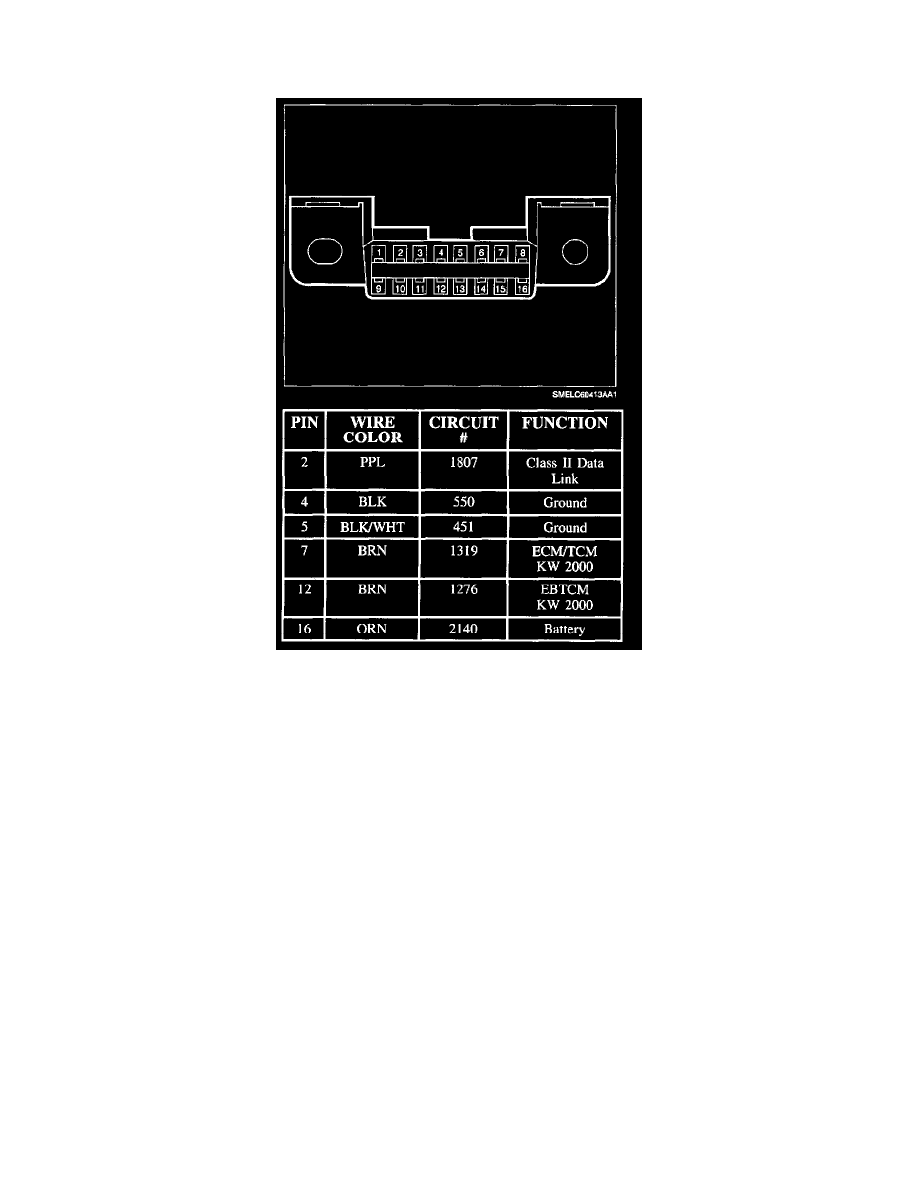L200 L4-2.2L VIN F (2002)

Information Bus: Description and Operation
General Description Serial Data Communication Network
The Saturn L-series may consist of up to three types of serial data communication links. The type of link(s) used for a given vehicle will depend on the
engine type and whether it's equipped with an Electronic Brake/traction Control Module (EBTCM).
The three serial data communication links are:
Class II
The Class II serial data link is used by the Body Control Module (BCM), Instrument Panel (I/P) cluster, Sensing And Diagnostic Module (SDM
(airbag)), Powertrain Control Module (PCM, 4 cylinder only) auto climate control module (if equipped), and OnStar Communication Interface
Module (CIM) (if equipped). The Class II link is used for normal vehicle communication between control modules and for Scan tool diagnostic
communication.
Class II is a 10.4 k/baud (k/bits per second) digital data communication protocol that operates only on logic 1's and logic 0's. Logic 0 is defined as 0
volts and logic 1 is defined as 7 volts. The Class II serial data structure incorporates a variable pulse width, so a logic 1 for instance would not be at 7
volts for the same amount of time for all messages. This is used to allow faster messaging to specific controllers.
The Class II link allows the reduction of separate wires that would otherwise be used to turn On or turn Off a device. For example, if the PCM needed
the SERVICE ENGINE SOON telltale On because it detected an emission related fault; it would send a message to the I/P cluster to turn On the
telltale instead of discretely sending a signal over a specified wire. Also, each controller could pass any type of information to other controllers at all
times improving on-board convenience features. All messages that each controller uses are sent continuously whether the controller needs them or not.
If the SES light is not being commanded On, the PCM to I/P cluster message will indicate to keep the light Off. Most likely, logic 0 would be sent to
keep the SES telltale Off. When the PCM needed the SES telltale to be turned On, it would change the bit to logic 1. This method of continues
messaging allows each controller to know when another controller is not communicating on the Class II link.
Each Class II module does not know which controller sent a message until it receives the message. Each message string contains a source identifier,
which tells the controller where the message came from. For example, if the PCM lost battery voltage, then the ignition was turned On, the BCM and
SDM would set a U1000 DTC. This DTC indicates that an expected message was not received and the source ID was not learned. If, for example, the
PCM lost battery voltage after the ignition was turned On, the BCM and SDM would set a U1064, lost communications with the PCM, since the PCM
ID was already learned. This method of "learning" by each control module allows different product lines to use different manufacturer controllers.
